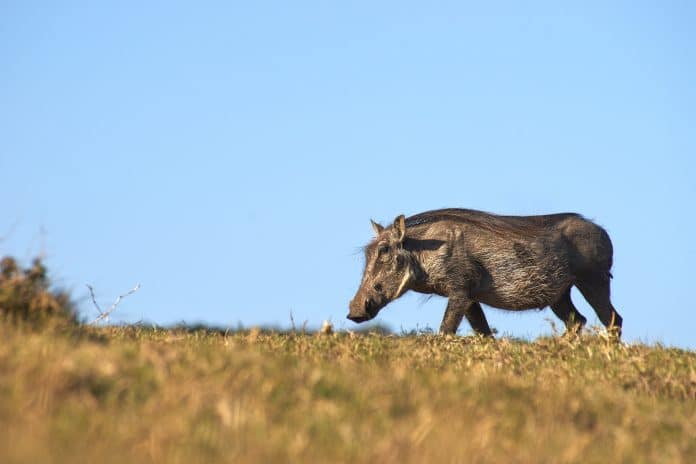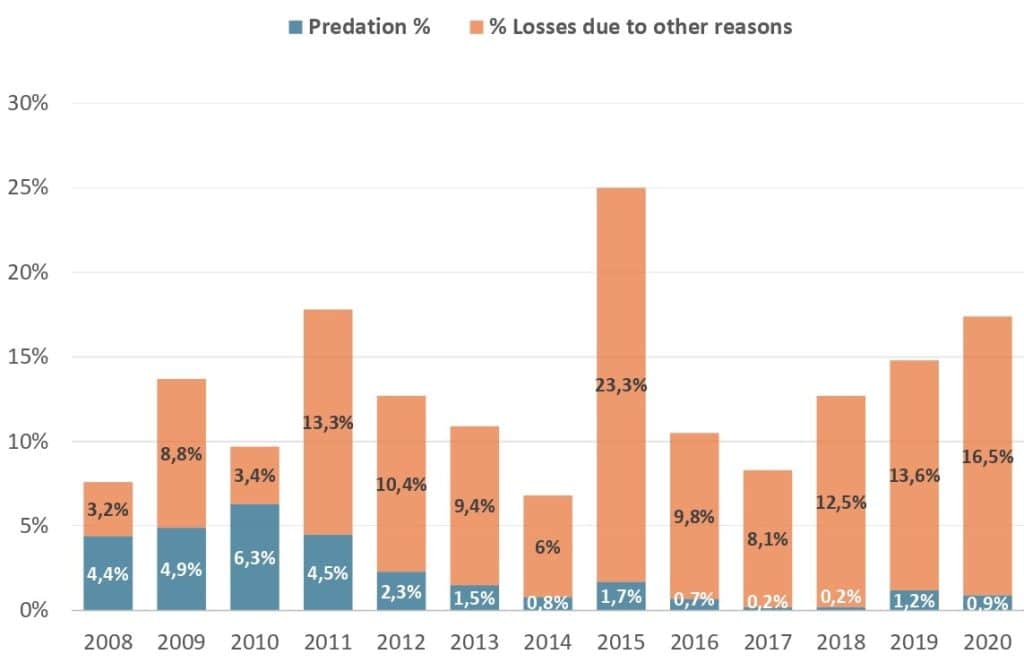Estimated reading time: 6 minutes
- Livestock producers face many challenges, such as predator-related losses. These losses must be kept to a minimum to ensure both the survival and financial security or profitability of farming operations.
- When engaging with livestock producers across South Africa, it is evident that predation management is an important aspect of general farming practices.
- Livestock producers strive to implement all the necessary preventive measures to fend off predators, including electric and jackal-proof fences.
- Many livestock predation programmes are run across the globe, offering varying premiums to recover direct losses in the market value of animals.
- While the ‘call and shoot’ approach efficiently manages predator populations, conservationists may argue that legislation needs to protect predators to maintain the ecosystem balance.
Livestock farming plays a crucial role in South Africa as it contributes approximately 11,8% to the gross value of agricultural products (Department of Agriculture, Land Reform and Rural Development, 2022) and contributes towards the overall food security of the country.
Livestock producers face many challenges, such as drought and animal diseases, which lead to livestock losses. Another issue producers must navigate is predator-related losses. These losses must be kept to a minimum to ensure both the survival and financial security or profitability of farming operations.
For example, on a sheep farm each ewe must successfully rear and wean at least one lamb per year – this is the fundamental goal all small-stock producers stive for to ensure their farming business remains viable. However, this goal is threatened by predators. The swelling population of animals such as warthogs in farming areas exacerbates the risk to livestock.
Read more about the effects of predation on the red meat industry here.
The warthog issue
When engaging with livestock producers across South Africa, it is evident that predation management is an important aspect of general farming practices. In their research using 2012 data, Hoffman, Leslie and Swanepoel (2016) noted that producers in the Northern Cape and Free State held a negative perception towards warthogs, linking them to infrastructural damage.
With a recent surge in warthog sightings on farmland and warthogs being a popular conversation topic among producers, it seems the 2012 observed trend is resurfacing. Warthog populations are on the rise throughout South Africa, posing challenges to effective predation management. While the direct impact of predation is seen in livestock losses, warthogs exert various indirect impacts, often causing serious damage to the natural environment and infrastructure such as fences. Damaged fences not only incur monetary expenses but also create convenient pathways for other predators to enter the farm.
This leads us to believe that the presence of warthogs and their rising numbers is a much greater contributor to livestock predation than we may think. Livestock producers strive to implement all the necessary preventive measures to fend off predators, including electric and jackal-proof fences. However, continuous damage to this infrastructure can be demotivating.
This means that while the well-documented behaviour and impacts of main predator species such as black-backed jackals, caracals, leopards and brown hyenas do play a role, external factors or species can inadvertently aid predation.
Direct and indirect impact
Measuring the full impact of predation on livestock is a complex challenge. Bahta, Maré and Van Niekerk’s (2022) research demonstrates that it is possible to quantify the direct and indirect economic impact of predation, specifically in terms of production losses. Their study found that predation had a downstream economic impact of R3 806 million for large stock and R648 million (2015) for small stock.
And what about the indirect impact on livestock production and performance? The presence of predators is a stress factor for livestock. Stress can trigger the release of the cortisol hormone which, at a high level, decreases growth.
In-calf cows may abort or changes in grazing behaviour might be experienced, which could lead to inefficient grazing and thus the loss of quality breeding animals, impacting the herd’s genetic quality and hybrid vigour. Quantifying these indirect predation impacts remains challenging due to their complex nature.
A compensation programme
Many livestock predation programmes are run across the globe, offering varying premiums to recover direct losses in the market value of animals. In the United States (US), most states run programmes that reimburse producers at 75% of market value when livestock losses are proven to result from predation.
Notably, California runs a pilot compensation programme that recognises the broader impact of livestock predation beyond direct losses. This comprehensive pilot programme covers both direct and indirect losses due to predation, including payments for using non-lethal techniques to deter wolves (Swenson, 2023).
This programme also compensates producers simply for farming near areas with wolves. For any potential stress to livestock, a producer will be paid 3% of the total market value per animal. With the increased call for global wildlife conservation efforts, this programme highlights how the co-existence of wildlife and livestock farming could be facilitated.
Solutions
While the ‘call and shoot’ approach efficiently manages predator populations, conservationists may argue that legislation needs to protect predators to maintain the ecosystem balance. Livestock and predator species compete for the same habitats but because of the contribution livestock production makes to food security and the national income, simply telling producers to not ‘harm’ predators without being compensated, as demonstrated in California, is not feasible.
Often overlooked in predation management, livestock management practices play a critical role. To minimise livestock losses, we should shift our focus from predation management to effective livestock management. Isolating livestock, especially ewes during the lambing season, using electric fences or barriers that deter predators, has proven to be a very effective management practice and has decreased the loss of lambs to predation (Figure 1). Not only are the indirect effects of predation mitigated when isolating livestock, but keeping animals close together also fosters a sense of safety among them.
Figure 1: Livestock losses up to weaning. (Source: Viljoen, 2020, Livestock & Predation Management, Predation Management South Africa [PMSA])
Using donkeys, alpacas and Anatolian dogs in combination with isolation practices can also prevent predators from entering a specific area. A survey conducted by Botha for the University of Pretoria in 2018, revealed that these animals decrease predation by 50 to 75%. These animals, especially Anatolian dogs, will deter warthogs from potentially damaging the fences of isolation camps and creating entry points for predators. To limit losses even further, the ‘call and shoot’ approach has proven to be the most effective way to reduce predator numbers in an area.
South Africa has a vibrant livestock industry made up of hardworking producers and various other stakeholders. Predation should not be a reason for the industry to experience losses as it can be properly managed or compensated for.
To fully understand the true impact of predation on the industry, up-to-date research is required. Recognising the indirect effects of livestock predation on the production and performance of livestock allows for a more accurate assessment of predation’s impact. This understanding can facilitate progressive management and inform policy discussions. – Siphiwe Tshabalala and Meyer van der Merwe, Department of Agricultural Economics, University of the Free State
For more information or references, send an email to the authors at TshabalalaS1@ufs.ac.za or VanDerMerweM10@ufs.ac.za.



